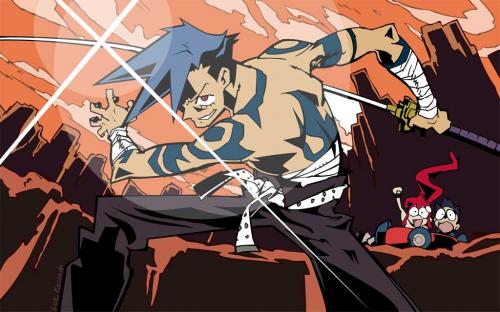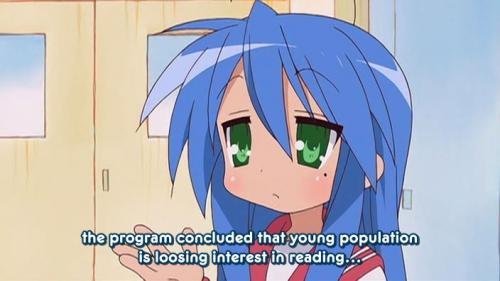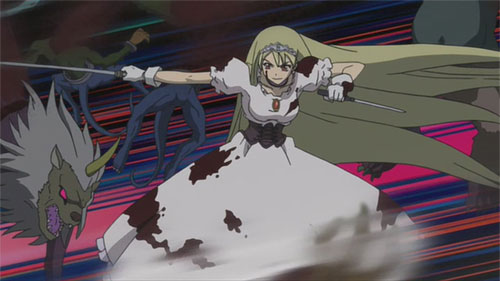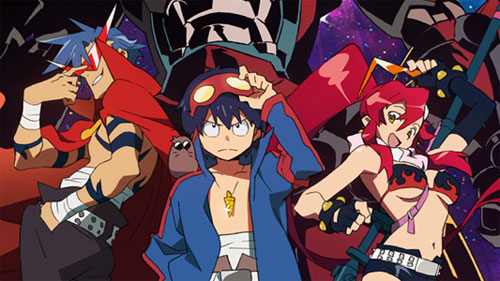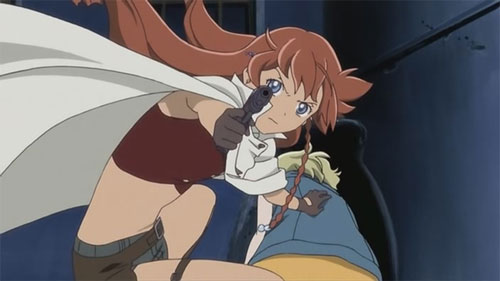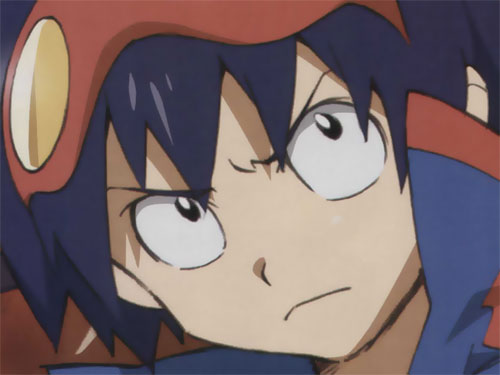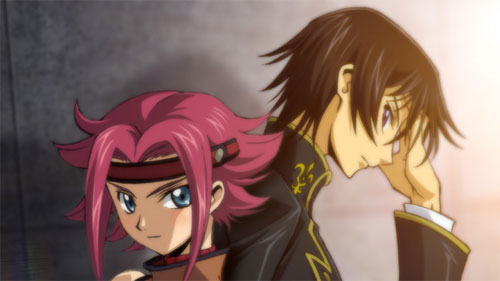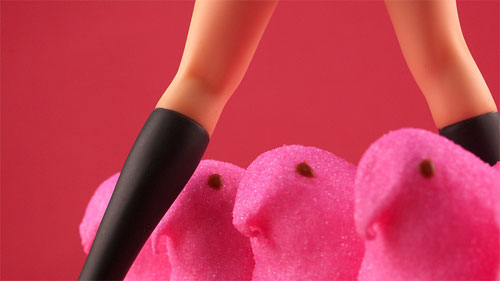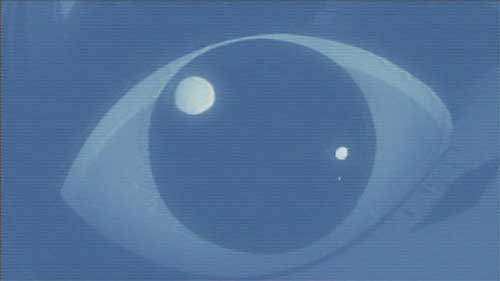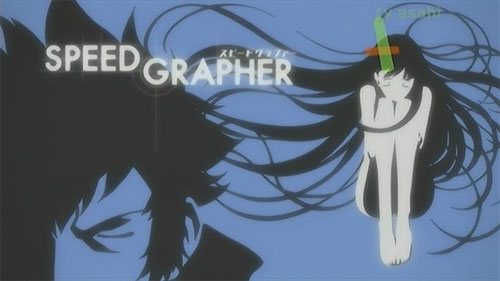
A title that I picked up some time after its initial airing, Speed Grapher strikes me as one of the better titles of 2005. I understand that Funimation has the rights to release it in the United States now, and I wonder what they’ve done to it. Speed Grapher has some rather adult themes to it, the story featuring the debauched behavior of a perverted upper-class in a dark future where anything can be bought. A photo-journalist named Saiga uncovers a secretive night club that caters to the most depraved of fetishes, and find himself trapped in a web of intrigue, murder, and crazy science-fiction superpowers.
The opening theme music, appropriately, is Duran Duran’s “Girls on Film,” making this one of the few animated series whose opening credits I’m willing to sit through. Alas, I cannot go into much about the particulars of the story without spoiling it, but the pacing of Speed Grapher is largely a simple “bad guy of the week” episodic chase show, with big bad villains trying to foil our intrepid heroes. Enemies lurk around every corner, and seemingly all-knowing arch-villains maneuver towards unknown ends that are somehow threatened by Saiga’s activities.
As the show progresses, it breaks a bit from the Dragonball / Bleach / One Piece formula of ever-more-dangerous opponents appearing over and over again and develops into a relatively sophisticated look into man’s cruelty towards man and the selfish pursuits that cause us to hurt each other. The writers seek at time to shock the audience with character that have truly abominable motivations (e.g. one character has been building a body out of the body parts of beautiful poor people), sometimes to the point of being insulting, but it is important to establish and affirm the wickedness of the antagonists from time to time.
The production value is generally excellent, though Studio Gonzo‘s signature inconsistency is present, the story is interesting and several of the characters appealing. I strongly suspect they could have told the story in half as many episodes, as there is a fair amount of filler in the middle of the twenty-four episode run. If you’re interested in some tough-guy action, a lot of violence, and some truly dastardly bad-guys, I highly recommend it. B- overall.
